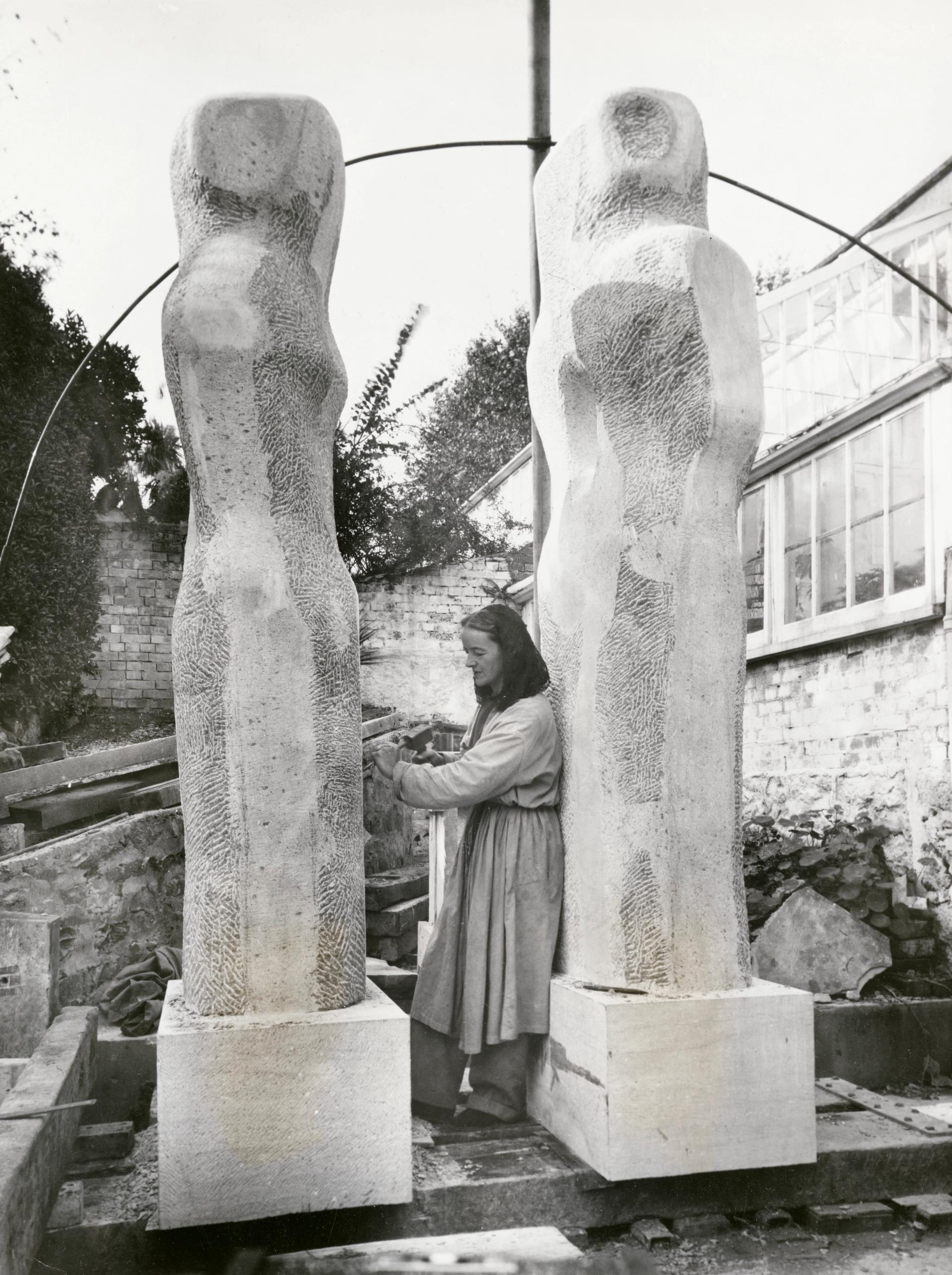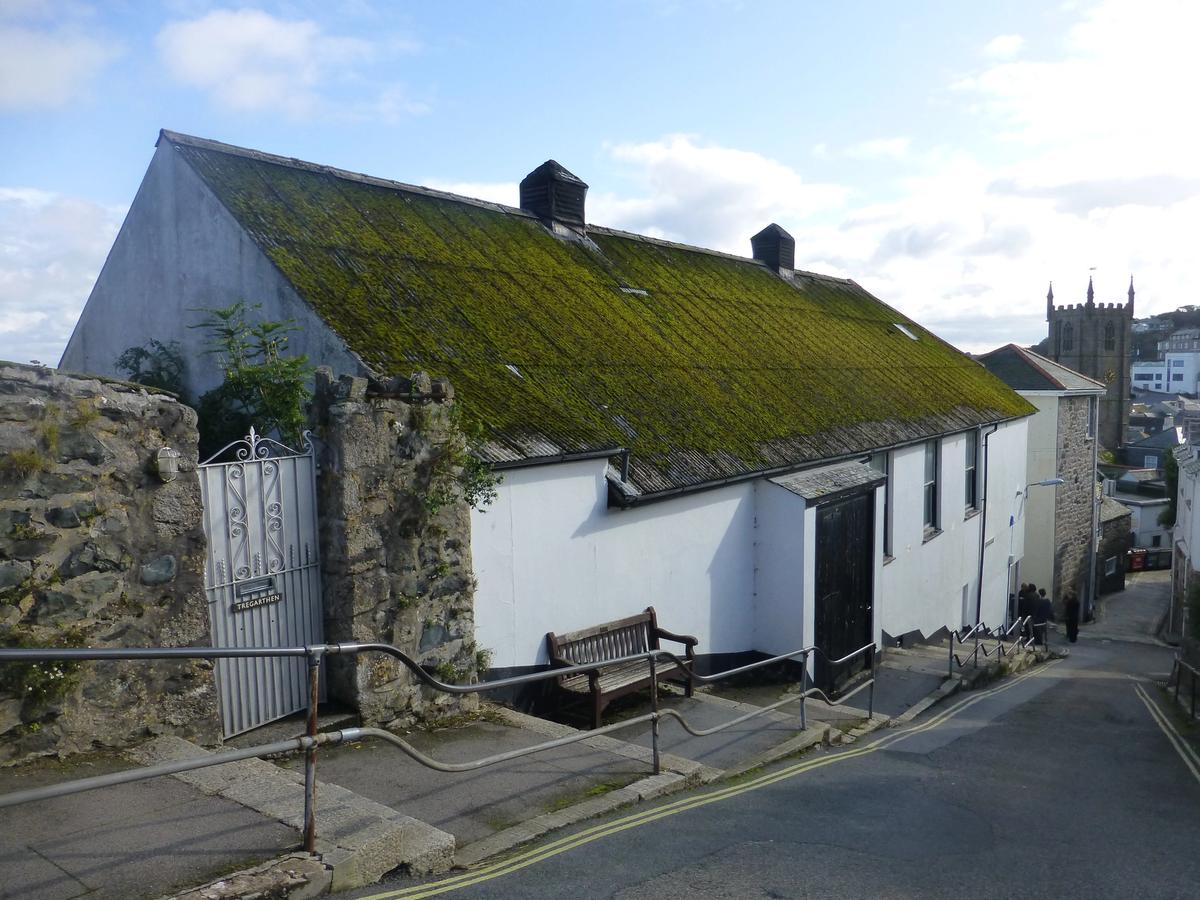A nondescript building in the steep back streets of St Ives in Cornwall, a vastly expanded 18th-century cottage which served the town as a navigation school, cinema, ballet school and dance hall, gains Grade II listed status today in honour of its last occupant: the sculptor Barbara Hepworth who died 45 years ago this week.
The former Palais de Dance still has the sprung floor once boasted as “the best in the west”, offices from its time as a cinema and a large mirror from the ballet school, but it also bears the scars of the monumental sculptures Hepworth created there including a grid of one foot squares laid out to help create some of her most renowned works. Currently used as storage, the Palais de Dance was bequeathed to the Tate by her family in 2015.
Hepworth was the most famous of the artists who became the St Ives School, colonising a modest fishing village where living and work space was cheap. When her second marriage to the artist Ben Nicholson collapsed she spent most of her life there, buying the hall in 1961 when her work outgrew the nearby studio, house and garden, now a branch of Tate St Ives.
She created the prototypes for huge commissions on the 24 metre dance hall floor, which still bears the silhouette of the 21-foot Single Form made for the United Nations in 1963, a response to the death in a plane crash of her friend the UN Secretary General Dag Hammaskjöld. A version of it stands by the lake in Battersea Park.

When Hepworth died in St Ives aged 73, in a fire almost certainly caused by her inveterate smoking in bed, the New York Times described her as “one of the world’s foremost sculptors”.
Heritage Minister Nigel Huddleston, who has listed the Palais on the advice of Historic England, said: “It is a fitting tribute, on the 45th anniversary of her death, to preserve the unique site where she created some of her most famous works."


